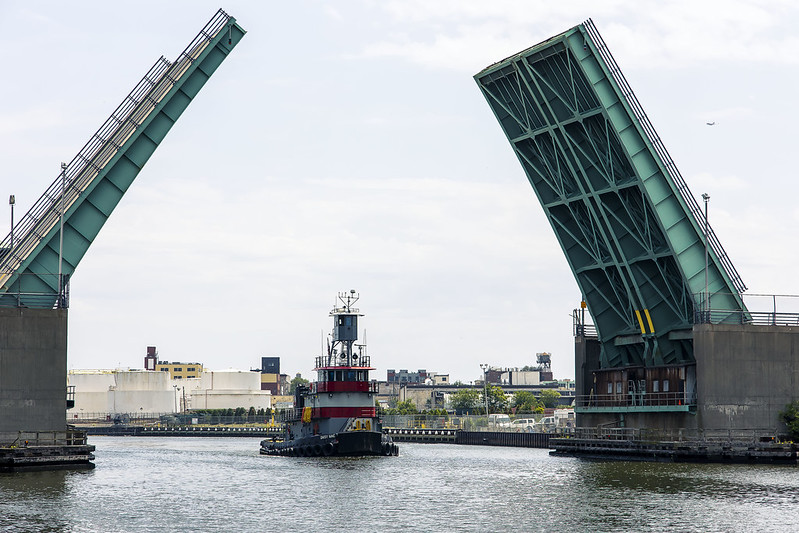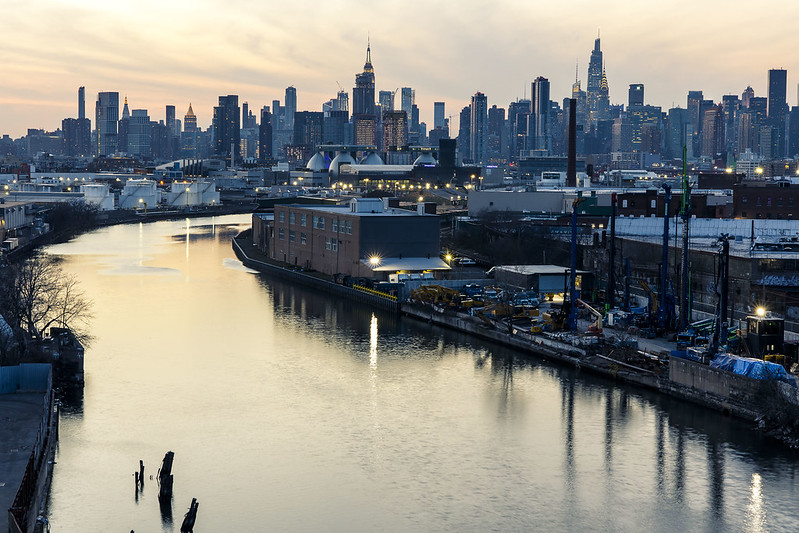Newtown Creek is a 3.8-mile-long industrial waterway that flows into the lower East River and forms part of the border between the boroughs of Brooklyn and Queens. The history of Newtown Creek is the story of how New York City’s economy evolved through the industrial age and into the modern era.
In the mid-1600s, the area was primarily occupied by farmsteads and small agrarian villages, and the waterway was used for local travel. Early industry along Newtown Creek at this time included brick, potash, timber, and shipbuilding. In the 1700s, it was reported that the principal trade items were furs, whalebone, pitch, and tar. By the 1800s, Newtown Creek had become a major New York City industrial waterway, lined with bulkheads and navigation channels, and no longer connected to upland streams providing freshwater. More than 50 major manufacturing operations were located along its banks, including oil refineries, petrochemical plants, fertilizer and glue factories, sawmills, and lumber and coal yards. The area was crowded with commercial vessels, including large boats bringing in raw materials and fuel, and taking out oil, chemicals and metals.
By the early 1900s, the creek’s shores were host to many industries, including more than 40 oil refineries, metal and chemical plants, manufactured gas plants, municipal and industrial discharge pipes, shipping and barging, and coal handling and storage facilities. During the wartime manufacturing boom of World War II, the creek was one of the busiest ports in the nation. Although overall industrial activity around the creek declined in the decades since World War II, the creek still serves as an important industrial transportation corridor for the privately- and municipally-owned industries that operate along its banks.
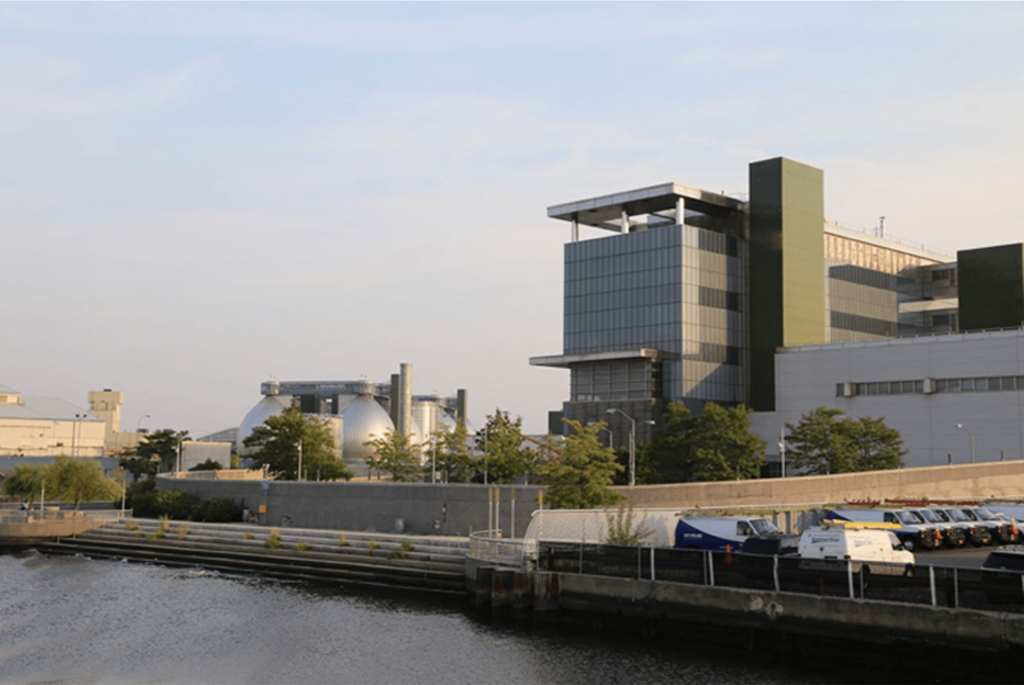
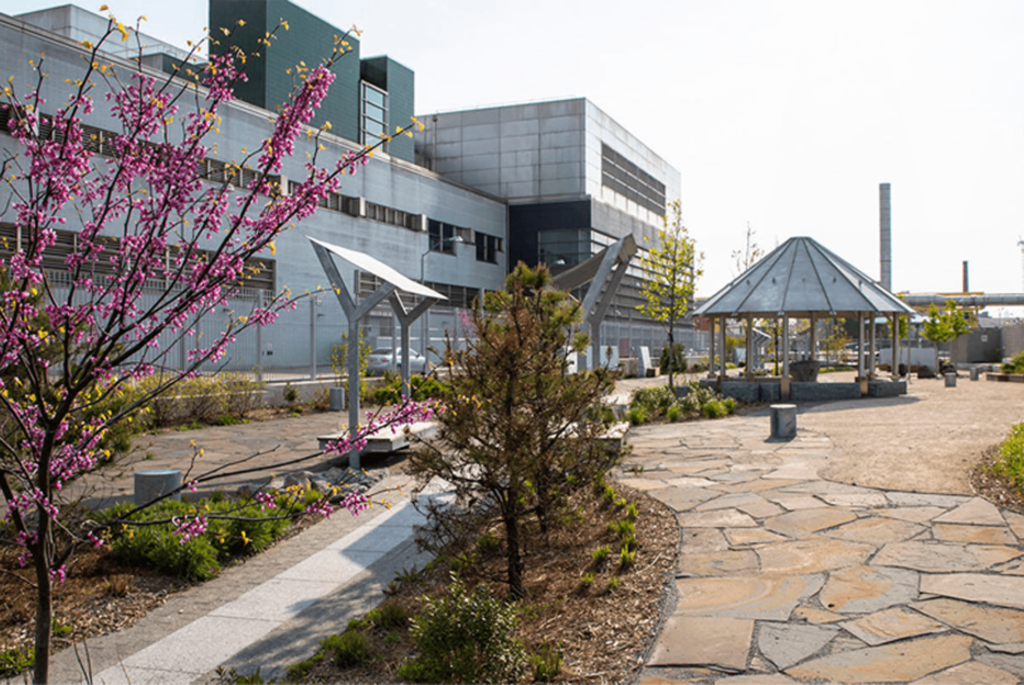
Prior to the dawn of modern environmental regulations, the centuries of unregulated urban development in the Newtown Creek area resulted in the release of pollutants into the creek, contaminating the waterway’s sediments. Until 1967, untreated stormwater and raw sewage were released directly into the waterway, as was common practice at the time. Many of the industries around Newtown Creek during the 1800s and early 1900s also released waste directly into the creek or allowed uncontrolled upland spills to migrate into the creek. Over time, combined sewer systems were constructed to manage the stormwater and sewage released into waterways. Combined sewer systems were originally designed to collect rainwater runoff, domestic sewage, and some industrial wastewater in the same pipe, discharging directly into waterbodies, such as the East River or Newtown Creek. Later, the systems were re-routed to wastewater treatment plants.
A sewage treatment plant was built in the Newtown Creek area in 1967. Since then, the combined sewer systems serving nearby parts of Brooklyn, Queens and Manhattan transport their wastewater to the Newtown Creek Wastewater Treatment Plant, where it is treated and then discharged. However, during periods of moderate or heavy rainfall or snowmelt, the wastewater volume in a combined sewer system can exceed the capacity of treatment plants. In those situations, the combined sewer system is designed to overflow (called a combined sewer overflow, or CSO) and discharge untreated stormwater and wastewater containing sewage, pathogens, toxic materials, hazardous substances and debris, directly into nearby streams, rivers, or other water bodies, including Newtown Creek.
Some areas near Newtown Creek are served by a municipal separate storm sewer system (MS4) and dedicated sewer lines. While the sewage in an MS4 area goes to the wastewater treatment plant, the MS4 pipes transport untreated stormwater directly to the water bodies. As such, MS4 discharge can contain pollutants washed from the streets, such as oils, chemicals, pathogens, and sediments.
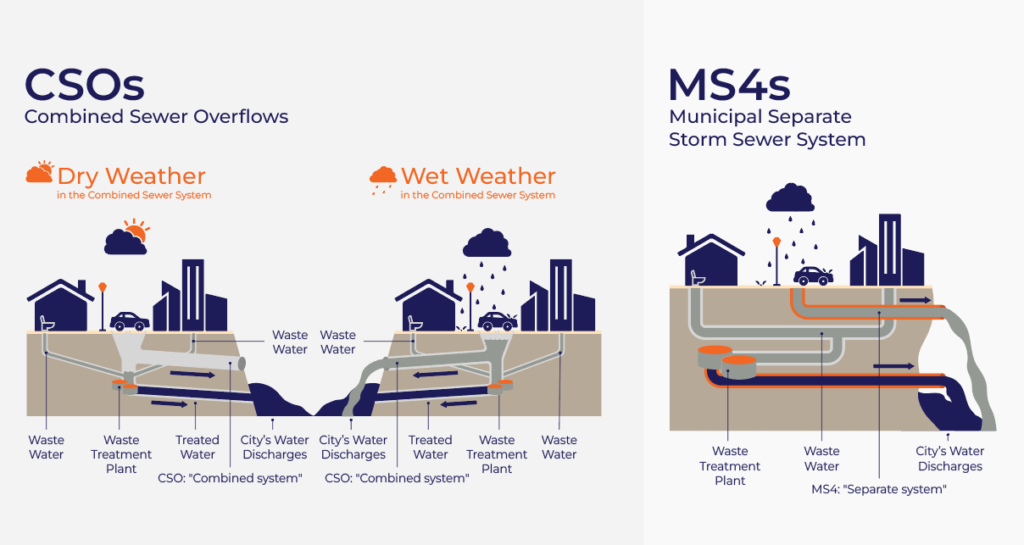
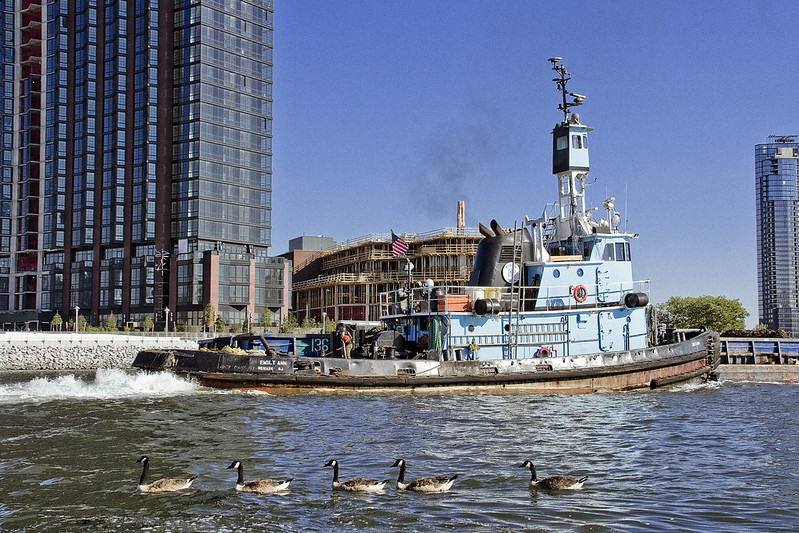
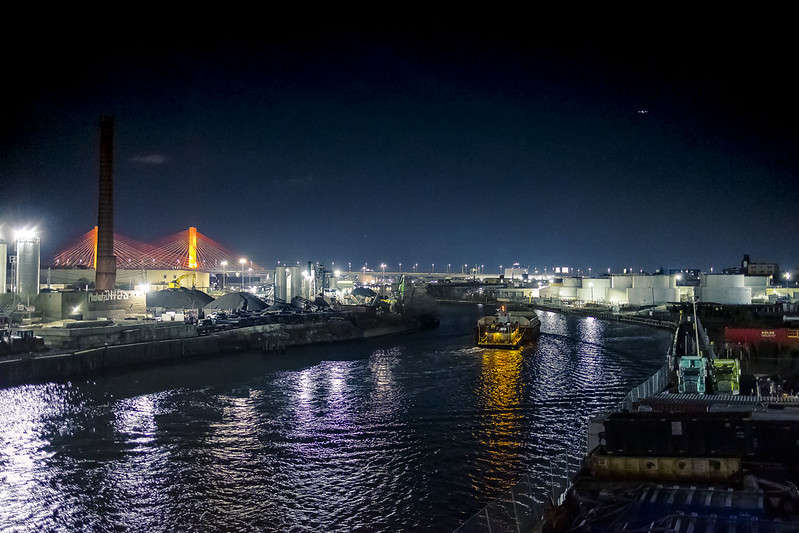
Today, CSOs and MS4s are the largest source of discharges into Newtown Creek and, because they can contain a combination of untreated sewage and stormwater, the pollutants that enter the creek from these discharges represent a potentially significant ongoing source of pollution to Newtown Creek. Untreated discharges and overflows from the City’s Newtown Creek Wastewater Treatment Plant and treated discharges from groundwater remediation and dewatering systems also go into Newtown Creek, along with surface runoff from surrounding properties. During the frequent CSO overflow events, anything that gets washed into the gutters from the street or flushed down a toilet can end up in Newtown Creek. Overflow events can be triggered by as little as a moderate rainfall and occur on average multiple times per week. Information on the duration and frequency of overflow events is made available by the New York State Department of Environmental Conservation’s Sewage Pollution Right To Know website. In an attempt to mitigate the adverse effects caused by these overflows during the next 20 years, New York City will be implementing a $1.4 billion plan for Newtown Creek which aims to reduce overflow events into the creek by more than half, although they will still occur frequently. MS4s will continue to discharge into the creek untreated. These ongoing discharges from CSOs and MS4s, along with impacts from the urban and industrial surrounds, maritime traffic and East River tidal exchange will continue to affect this industrial waterway well into the future.
With centuries of industrial, commercial, and residential development, Newtown Creek is fully urbanized, with virtually no remaining natural marshlands or freshwater streams. Today, Newtown Creek remains a critical industrial waterway, with pockets of mixed-use, commercial and residential developments. Current uses near the creek include: warehouse and distribution facilities; vehicle storage and maintenance; electrical distribution; plastics and foil manufacturing; waste transfer yards and recycling facilities; road service support facilities; construction materials storage; facilities that store electrical equipment; scrap metal processing facilities; lumberyards; ready-mix concrete plants; bulk fuel distribution terminals; railroads (e.g., tracks, yards); utilities; and municipal wastewater treatment.
Since the Superfund designation in 2011, the Newtown Creek Group (NCG) has been dedicated to the cleanup of Newtown Creek. The remediation and restoration will be protective of human health and the environment, consistent with its continued use as a critical Significant Maritime Industrial Area (SMIA)-designated waterway that is vital to the success of businesses along its banks and the economy of the surrounding neighborhoods. To learn more about this, please visit our Superfund Page.
